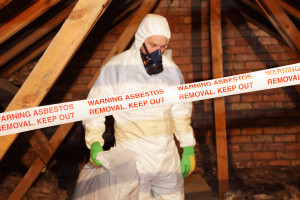If you watch television once in a while, you have heard of Mesothelioma through public service messages and legal advertisers. At Florida Lung, Asthma and Sleep Specialists, (FLASS) we realize you might know mesothelioma is cancer, but you might not know much about the disease.
Plus, you might not know that, as was announced last week, some important developments are happening in ongoing research for a treatment.
Mesothelioma: What is it?
The long name for this condition is malignant pleural mesothelioma, nicknamed MPM. It manifests itself as a cancer which grows in the linings of the lungs. Traditionally this has been considered a rare disease, but it is on the march. The statistics of this type of cancer are rising, intensifying an urgent need for treatment options.
Mesothelioma: Signs, Signals and Symptoms
Mayo Clinic lists the primary symptoms of Pleural Mesothelioma, stressing the effects on “the tissue that surrounds the lungs.”
· The Pain: “Chest pain under the rib cage,”
· The Hack and Hurt: “Painful coughing,”
· The Huff and Puff: Dyspnea, “Shortness of breath,”
· A Strange Tissue Gain: “Unusual lumps of tissue under the skin on your chest,”
· A Strange Loss: “Unexplained weight loss”
Mesothelioma: Where Does It Come From?
Likewise, as you can see from above, the Mayo experts declare, “Signs and symptoms of mesothelioma aren’t specific to this disease and, due to the rarity of mesothelioma, are more likely to be related to other conditions. If any persistent signs and symptoms seem unusual or bothersome, ask your doctor to evaluate them.”
There is another clue to help differentiate MPM, and it has to do with your lifestyle or vocation: Exposure to asbestos. If you have symptoms above, plus you have worked with or been exposed to asbestos, inform your physician.
MPM is related strongly to the occupational exposure to asbestos. We know you have heard about the dangers of asbestos. You might even know it has been banned in the US. However, it was common in the 1960’s and the 1980’s.
According to recent research reports in Science Daily online magazine, “Although use of asbestos has been banned in the United States and many European countries, asbestos is still being used and extracted in many developing countries.” Thus, expert researcher, Dr. Scherpereel recently stated, “For these reasons, we expect to continue to see growing incidence of mesothelioma in the coming decades.
The disease is slow and persistent at first. A patient might be exposed to asbestos for 20-40 years before the chronic inflammation engulfs the lungs. Then, as the cancer grows. things happen quickly:
1. Quantity of life: The median life expectancy is 13-15 months.
2. Quality of life: In spite of initial chemotherapy, 50 percent of patients relapse within only 6 months of ending treatment.
3. Prognosis: There have been no effective therapeutic options for patients suffering from MPM. But the good news is that might change!
Dr. Arnaud Scherpereel, MD,PhD, and His New Hope for Mesothelioma Patients

Hope Comes With the New Mindsets for Mesothelioma Treatment.
However, we might soon see the dawn of new hope for patient with mesothelioma. In reports soon to be revealed at the 2017 American Society of Clinical Oncology (ASCO) Annual Meeting, Dr. Arnaud Scherpereel, head of the Pulmonary and Thoracic Oncology Department at the University Hospital (CHU) of Lille in Lille, France.
With optimism and confidence, he has announced some recent and ongoing findings from on an important phase II clinical trial. The discoveries of the studies are revealing “that immunotherapy may slow the growth of MPM after relapse. At 12 weeks, cancer had not worsened in 44% of patients who received nivolumab (Opdivo) and in 50% of those who received nivolumab with ipilimumab (Yervoy).”
More Mesothelioma News Is Happening!
He stated, “Our findings suggest that immunotherapy may provide new hope to patients with relapsed mesothelioma.” He added, “This randomized phase II trial may be enough to support the use of immune checkpoint inhibitors in this setting, but it is too early to conclude whether nivolumab alone or the combination of nivolumab and ipilimumab is better.”
Dr. Scherpereel clarified the basis behind his research. He stated, “Mesothelioma cells build a protective tumor micro-environment to shield themselves against the immune system’s attacks and even act against anti-tumor immune response.”
More Medicine. More Hope. More Time

The Dawn of A New Treatment for Mesothelioma!
His insight has involved a paradigm shift for treatment. He explained why this treatment appears to be working, “Therefore, therapies that shift the tumor micro-environment from a state of immune suppression to one of immune activation may hold promise in MPM.”
But this is not the whole story! FLASS invites you to revisit this blog next week for part II of our Mesothelioma coverage:
“Part II: Mesothelioma Studies Weave Life-Lines of Hope.”
Meanwhile, from the Mesothelioma and Asbestos Awareness Center, FLASS leaves you with a thought for today, “Immunotherapy is one of the most exciting areas of cancer research today.”
We add, “The immune system is often described as one of our greatest survival tools. It’s vital to fighting off dangers to our health, and an emerging treatment, immunotherapy, is harnessing its strength to better fight cancer.”




